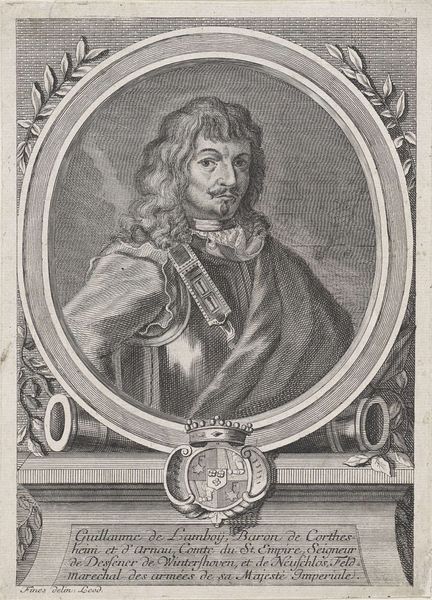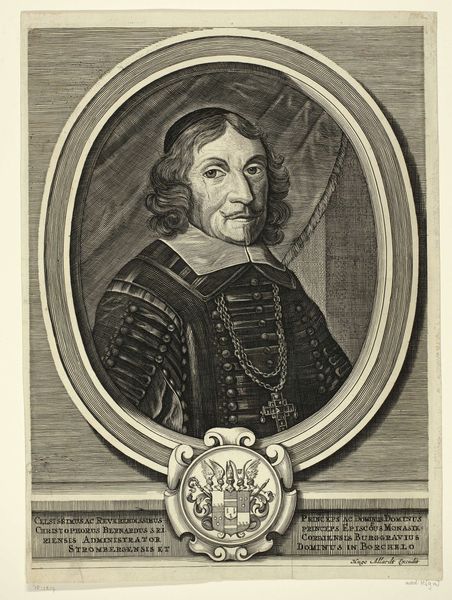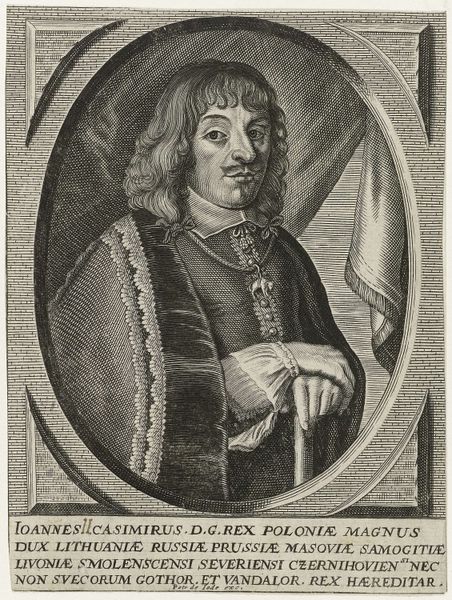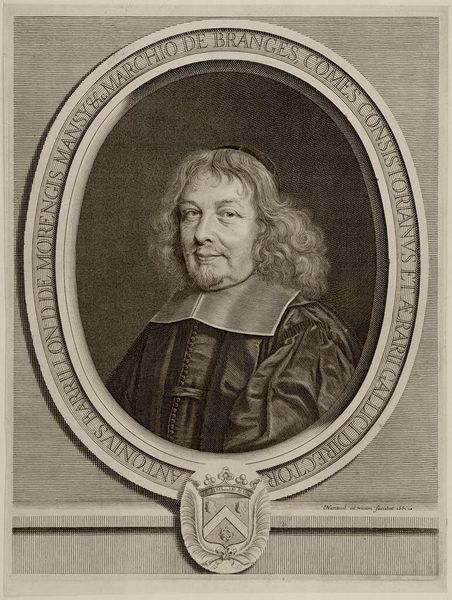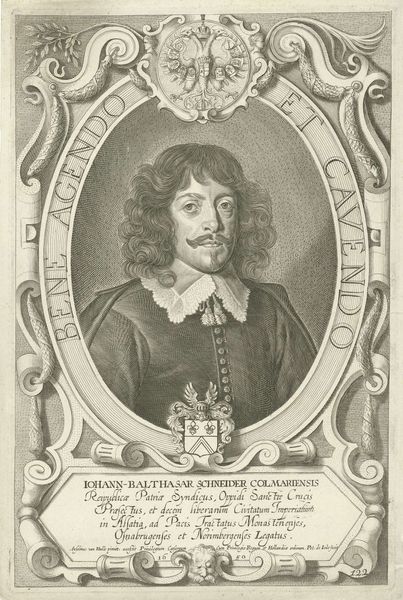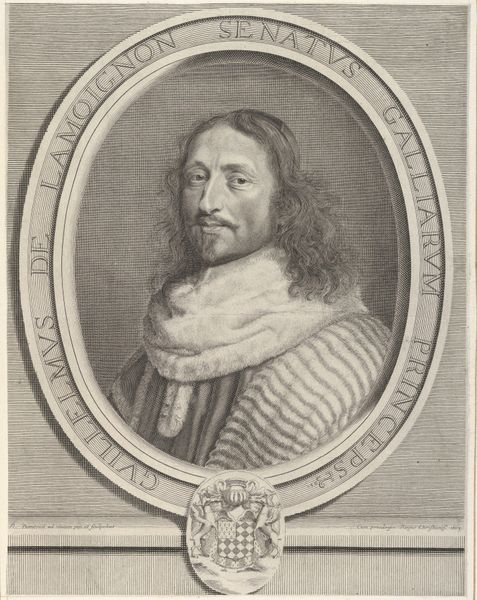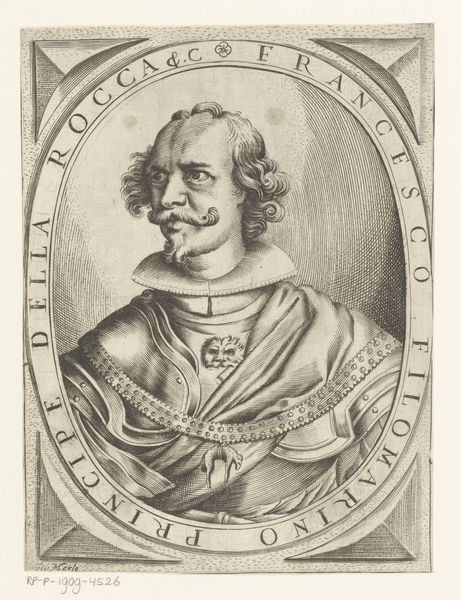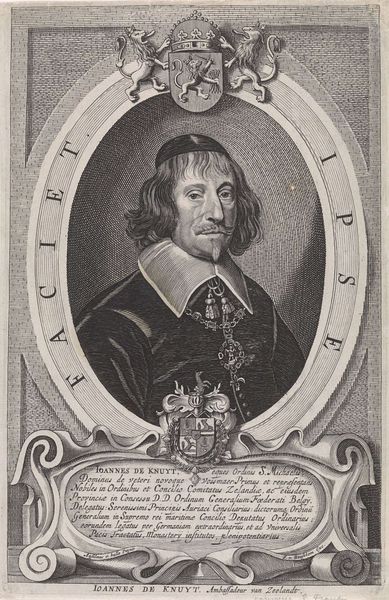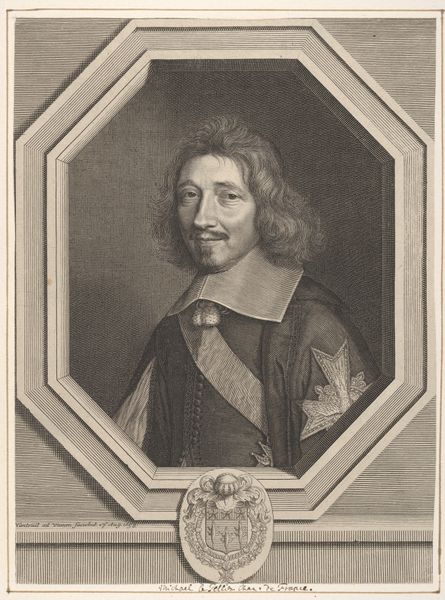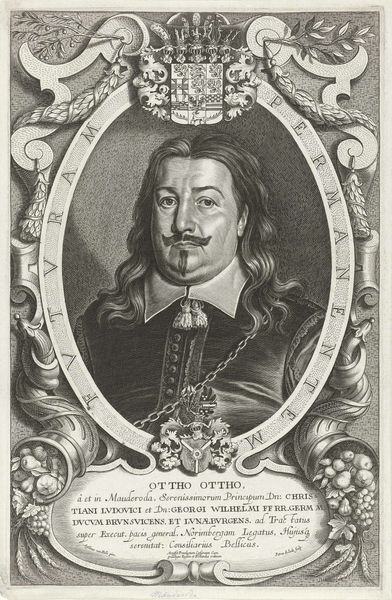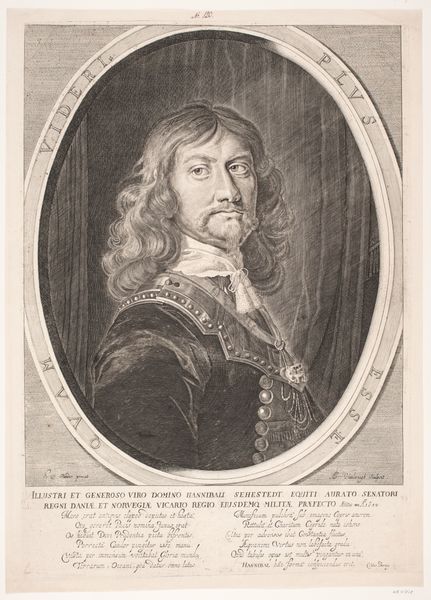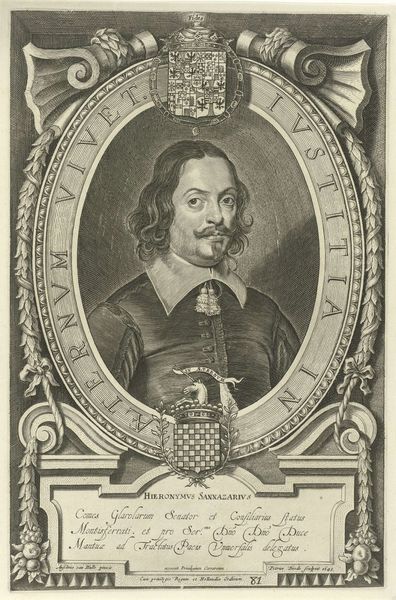
print, engraving
#
baroque
# print
#
history-painting
#
engraving
Dimensions: height 305 mm, width 197 mm
Copyright: Rijks Museum: Open Domain
Editor: Here we have "Portret van Abel de Servien, graaf de la Roche," a print, specifically an engraving, by Paulus Pontius, dating somewhere between 1648 and 1697. It feels very formal, almost stately, with all that ornate detail. What catches your eye about this piece? Curator: It's the gaze, isn't it? That sideways glance...almost knowing. I see a man acutely aware of his power, but perhaps a tad weary of its trappings. This isn't just a portrait; it's a performance of status, baroque style. Do you get the sense of controlled energy in those swirling lines of the engraving itself? The artist's hand mirroring the subject’s control. Editor: I see that. The lines are so intricate, and yet the overall impression is very composed. It makes you wonder about the person behind all that... pomp? Was he really that important, this Abel de Servien? Curator: Oh, absolutely! That inscription gives a clue—a royal advisor and diplomat. Crucial to understanding pieces like this is thinking about their function: to project influence, commemorate achievement. It’s fascinating how printmaking democratized portraiture, allowing for wider distribution of these images of power. Did that alter people's connection to their leaders, do you think? Editor: That’s a good question. Seeing these images replicated probably made these figures seem more accessible, even while cementing their authority. I guess I never thought of prints as having that kind of impact before. Curator: Exactly! Each line, each flourish in a work like this serves a purpose. It is not just art for art's sake; but propaganda, history and performance all at once. Now what feeling will you leave with?
Comments
No comments
Be the first to comment and join the conversation on the ultimate creative platform.
